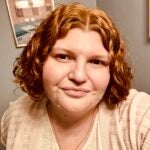Table of contents
Create a culture that means business™
Schedule a demo with an Achievers solution expert today.
Flexible work isn’t a perk — it’s a proof point. It shows your employees you trust them to do their best work without micromanaging where or when it happens. And that trust pays off. Flexibility reduces burnout, supports wellbeing, and boosts engagement.
But it’s not just good for people. It’s great for your reputation too. A flexible culture helps you attract top talent and keep the talent you’ve got. Because let’s be honest — rigid rules are out, and adaptable, human-centered workplaces are in.
So how do you bring that to life? Start here — with seven proven ways to build more flexibility into the way your organization works.
7 ways to make flexibility more than a buzzword
Ready to give your people the kind of flexibility they’re actually asking for — not just the kind that looks good on a careers page? Good news: You don’t need to reinvent your entire organization. Just start with these seven practical strategies to build a more flexible (and more human) workplace — one that meets expectations and inspires performance:

1. Let employees work from anywhere
Remote and hybrid work models boost employee satisfaction, broaden your talent pool, and build organizational resilience. The key? Equip teams with tools for collaboration, set clear expectations, and lean into frequent recognition. When employees feel appreciated — no matter where they log in from — they stay connected, motivated, and engaged. It’s not just flexible — it’s foundational.
2. Give employees control over their hours
Flexibility isn’t just appreciated — it’s expected. Letting employees adjust their hours or work compressed weeks helps reduce stress, support work-life balance, and boost morale. It also shows trust — something that drives performance more than a rigid 9-to-5 ever could. Meet people where (and when) they thrive, and they’ll show up at their best.
3. Prioritize outcomes over office time
Success isn’t about logging hours — it’s about delivering impact. A results-first mindset empowers employees to manage their time while staying laser-focused on outcomes. Set clear goals, check in regularly, and let performance — not presence — do the talking. Because in today’s workplace, trust drives productivity. (And no one does their best work staring at the clock.)
4. Make time off flexible
Time off shouldn’t be a guilt trip. Offering generous and flexible leave — from PTO and personal days to sick and parental leave — helps employees rest, recharge, and show up at their best. It also sends a message: we trust you to take care of yourself. And when people feel supported — not burned out — they’re far more likely to stay, engage, and thrive.
5. Invest in learning
Want a more flexible workforce? Start by making your people more versatile. Offering learning opportunities — think courses, mentorships, and cross-training — helps employees grow their skills and stay ready for change. It’s good for business, too. When people can shift roles or take on new challenges with confidence, you build adaptability into the fabric of your team — and future-proof your talent.
6. Design office spaces that flex to fit different work styles
Work styles aren’t one-size-fits-all — and your office shouldn’t be either. Design spaces that give employees options: quiet zones, open collaboration areas, tech-enabled huddle rooms. Even hot desking has its perks — like more movement, more mingling, and fewer turf wars over the “good” window seat. Give people the freedom to choose how they work best, and they’ll reward you with results.
7. Keep lines of communication open
Flexibility only works when people stay connected. Invest in chat tools, project platforms, and video calls to keep collaboration seamless — no matter where your team sits. Just as important? Creating space for employee feedback. Pulse surveys and always-on channels give your people a voice — and your company the insights to keep improving. Because flexible workplaces don’t just talk. They listen.
The tricky bits: What makes flexibility hard (and how to handle it)
Let’s be honest — workplace flexibility sounds great until you actually try to roll it out. Setting clear expectations around hours, communication, and performance takes thoughtful planning (and a lot of over communication). You’ll also need to tackle the cultural shift head-on. Not everyone will cheer for change — especially if they’ve spent years perfecting their in-office routine.
And then there’s fairness. Remote, hybrid, or in-office — everyone deserves the same support, recognition, and opportunities. That means being intentional about access, equity, and career growth, no matter where your people plug in.
Make flexibility work — with a little help from Achievers
Flexibility is powerful — but only if your people feel connected, heard, and appreciated, no matter where or when they work. That’s where Achievers comes in. Our employee engagement platform makes flexible work feel, well, seamless. Recognition happens in real time, not in hindsight. Feedback flows continuously — not just once a year. And cross-team connections thrive, even across time zones.
Whether your workforce is remote, hybrid, in-office — or somewhere in between — Achievers helps you build a culture of recognition where everyone feels valued and empowered.
Flexibility can be your competitive edge — if you embrace it
Flexibility isn’t a trend — it’s a transformation. Today’s employees expect more than just a desk and a schedule. They want trust, autonomy, and support to do their best work in a way that works for them.
When you build flexibility into your culture — not just your policy handbook — you create a workplace that’s more resilient, more inclusive, and more engaging.
And with the right tools, like Achievers, it’s easier than ever to make flexibility feel seamless. Because when people feel empowered, appreciated, and connected — no matter where they are — everyone wins.



